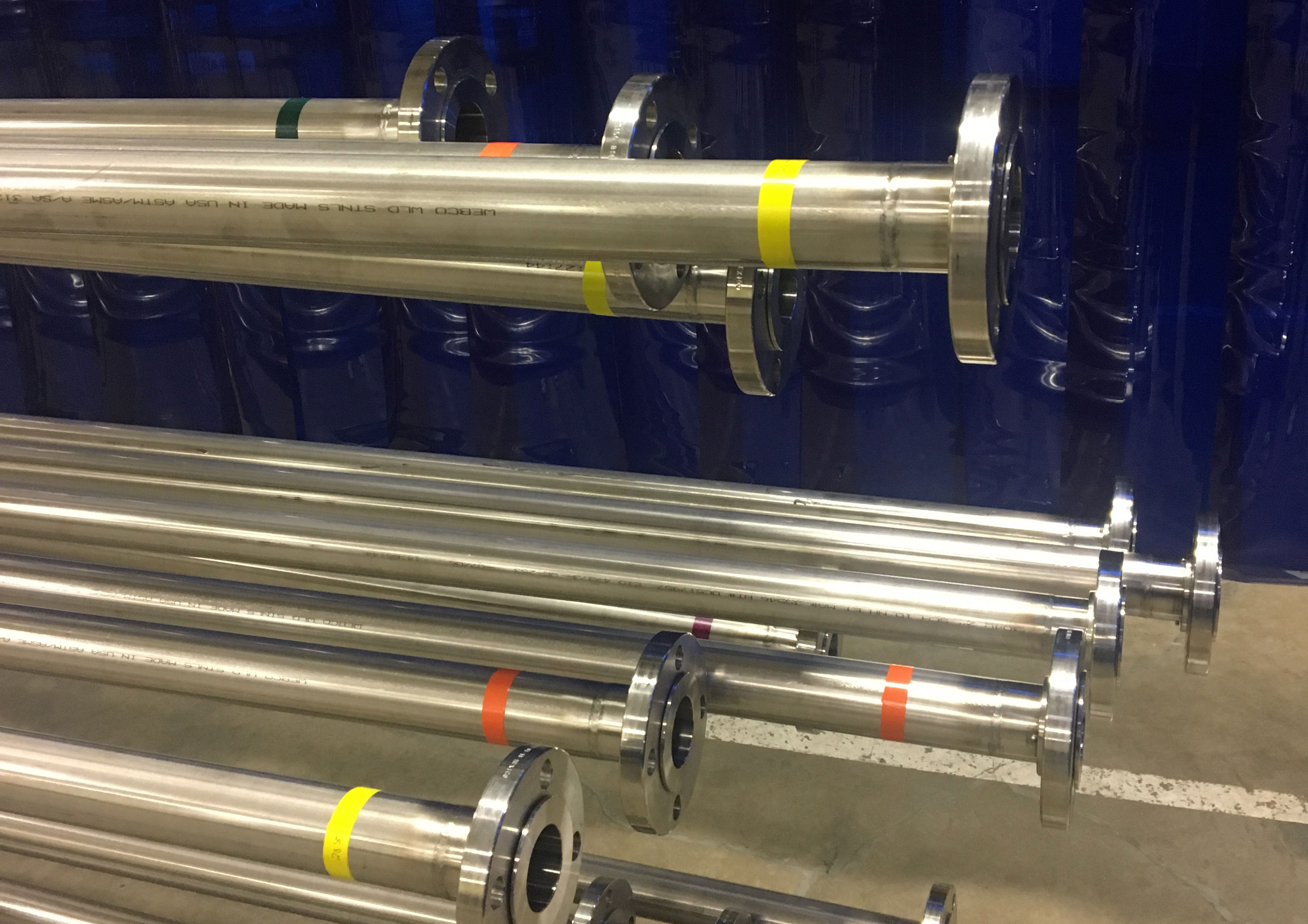
Stainless steel contamination can be a real problem in applications that require clean corrosion free surfaces. This is frequently a requirement in labs as well as food and pharmaceutical plants. Stainless steel, when fabricated correctly, provides excellent corrosion resistance. When misapplied, this will not be the case. Precautions must be taken to prevent contamination of stainless steel surfaces during fabrication. This is possible with the proper precautions, when done in a shop in controlled conditions, and more difficult when installation is carried out in a project field location.
There are several ways that stainless steel can become contaminated during fabrication. The three major causes are contamination with carbon, chloride or mild steel. To have proven results, It is important to eliminate all of them.
Contamination by mild steels occurs just by contact with the stainless steel. This might be caused by contact with tools such as screwdrivers, files, drills and polishing tools that have already been used on mild steel. Or it may be caused by grinding dust produced by using power tools or falling particles of welding and flame cutting on carbon steel in the general proximity.
Contamination by chloride, while less common, can be caused by contact with hydrochloric acid, or even, in extreme cases, from salt in sweat if not cleaned appropriately.
Contamination by Carbon occurs due to welding of stainless steel to carbon steel, flakes from welding carbon steel in the general proximity, or even some pen or markers used to write on both carbon and the stainless.
It’s common to see rust on process equipment caused just from welding or grinding on carbon steel in the general proximity. Grinding stainless steel welds with mild steel brushes can also leave the pipe covered with polka dots of rust in short order. Once embedded in the stainless steel, it is very difficult to remove all of the rust spots permanently. Once the rust has bloomed, if left untreated, it can progress into pitting corrosion and will haunt the owner from that point on.
I have heard of tanks that developed pinhole leaks in the weld zone, apparently from improper cleaning of the welds. In time, the weld zones can weaken to a point that there is very much a safety issue at stake, particularly with process safety management applications. This has been known to happen on welds that had been cleaned with type 302SS brushes. To prevent issues like this it is recommended to use brushes made with 316L, and nothing less.
One of the most difficult sources of iron residue to avoid is the atmosphere itself. This can be especially true when fabrication is done in the industrial plant rather than in an isolated fabrication shop. Industrial areas have a surprising amount of iron in the air. This iron “falls out” onto exposed items, including previously cleaned stainless steel parts. Also, water which is used to “clean” the surfaces may itself contain iron which will be deposited onto the surfaces thought to be clean. Note that water may also contain other chemicals which may leave rust-colored deposits which may be mistaken for indications of the presence of free iron.
At Optimation we fabricate a lot of systems built of stainless steel. We understand the need for clean, rust free systems and the methods that must be used to fabricate them. Because we perform work for several clients in the chemical, food and beverage, and pharmaceutical industries who have specific contamination concerns, we created aa stainless-only welding area, free and clear of iron and carbon contaminates. We use stainless steel vises and tools to help ensure that iron won’t come in contact with the vessels, skids and systems being built.
Do you have stainless steel process piping or equipment that you will need to fabricate this year? Consider the risks of contamination and choose your supplier wisely.
{{cta(‘f80cb7fe-0389-4741-b0fa-edd99639c2a3’)}}
